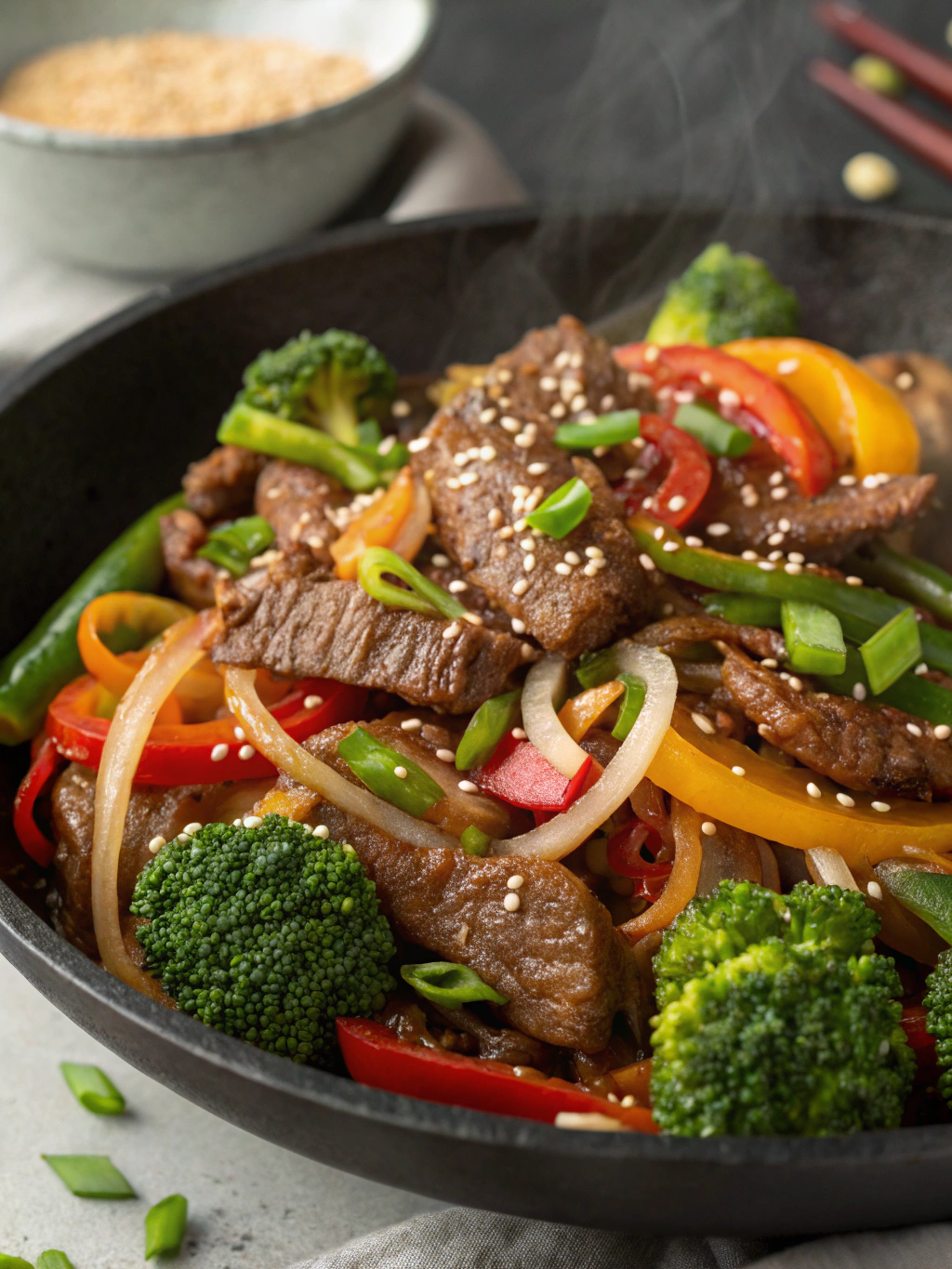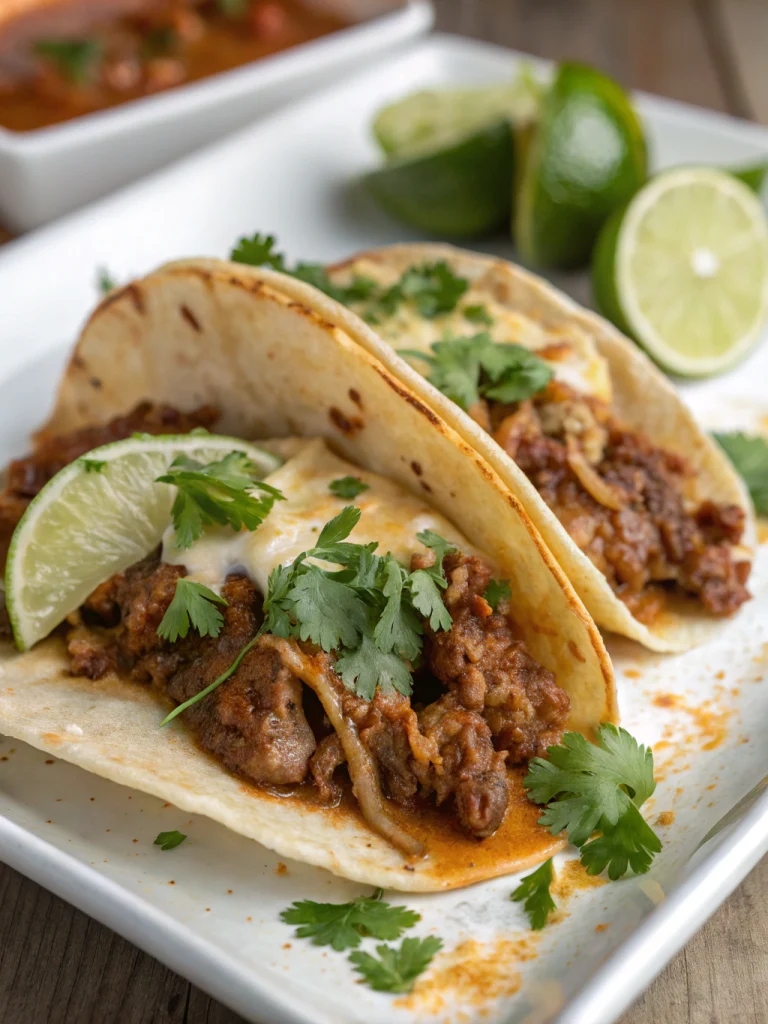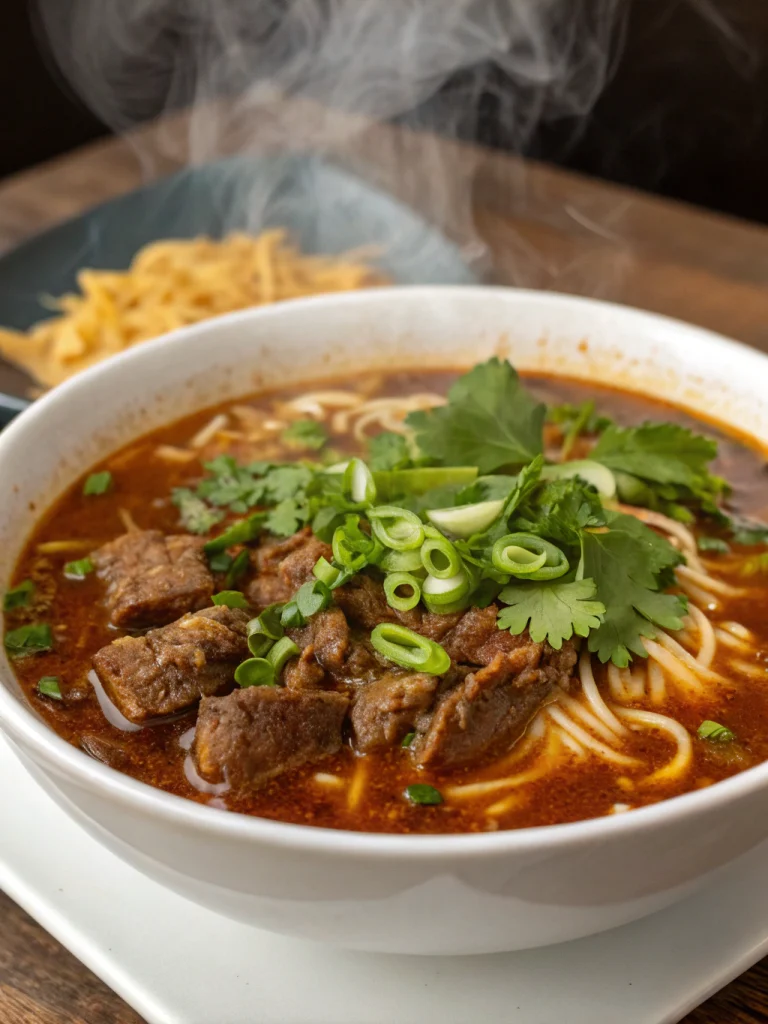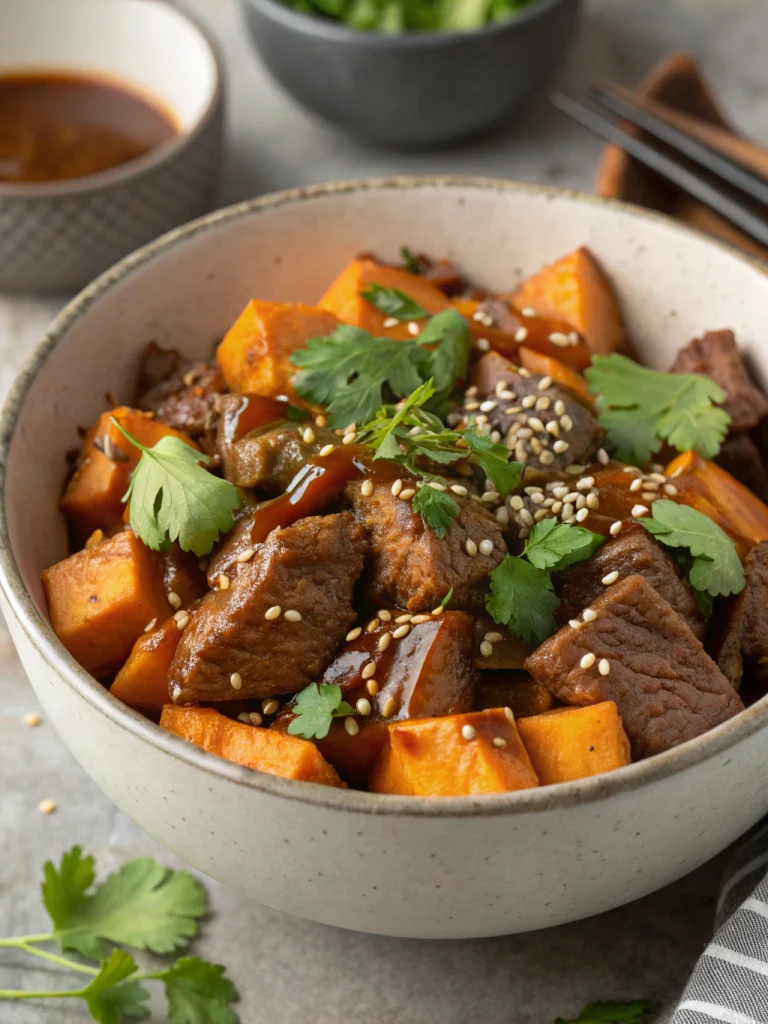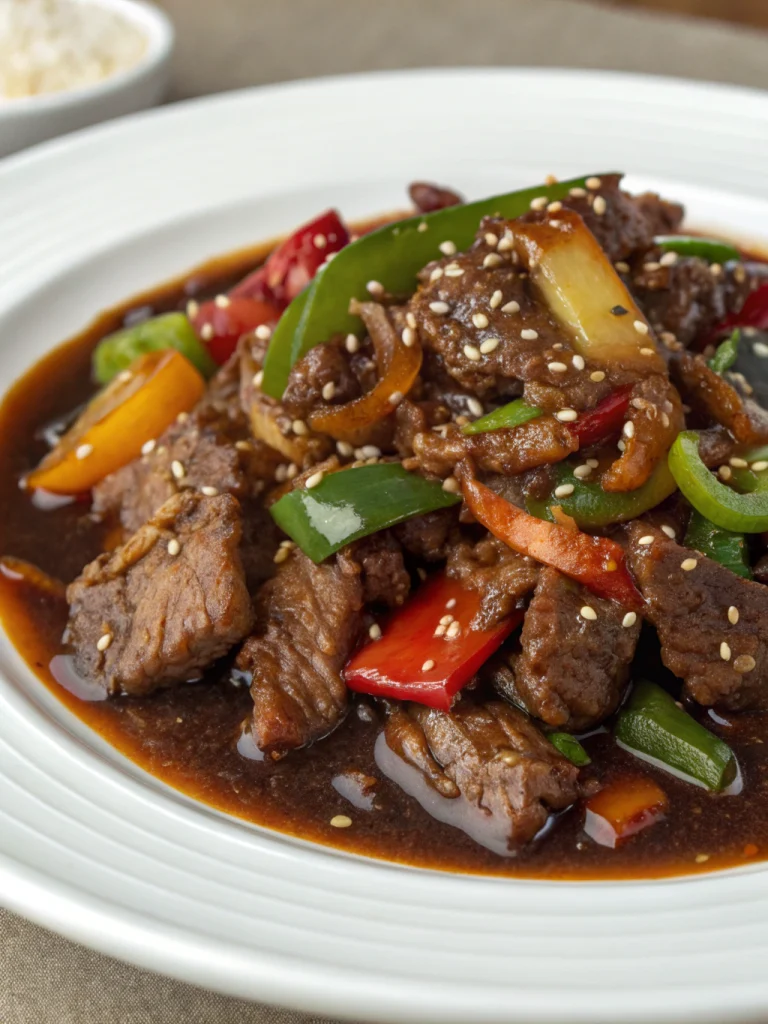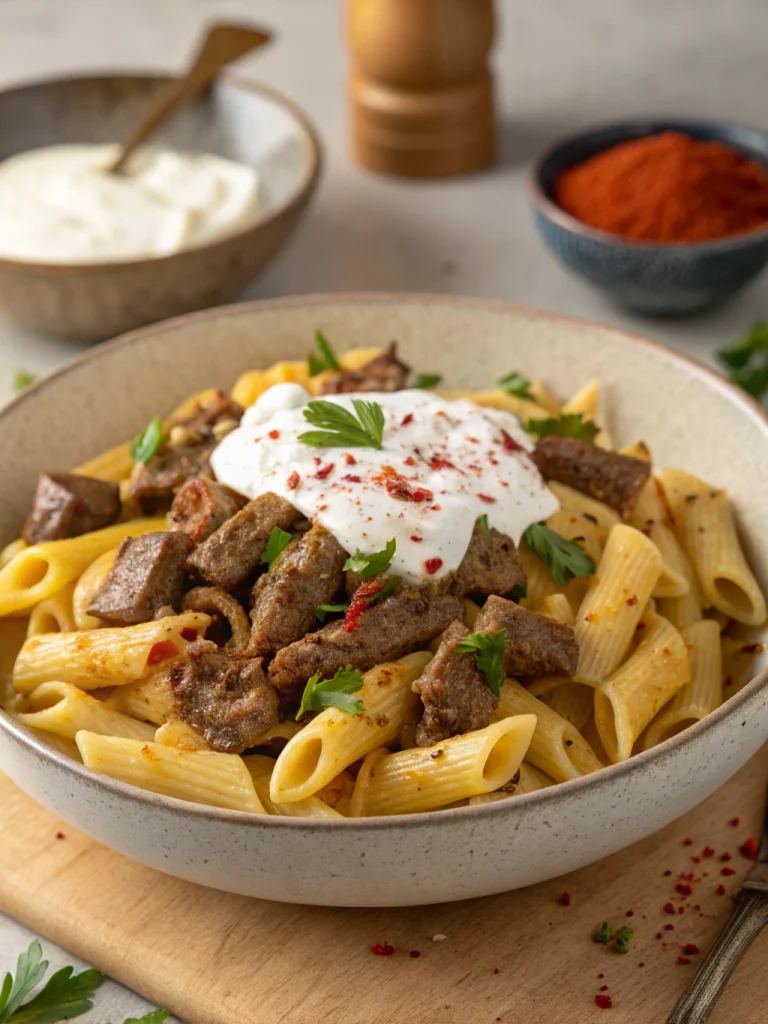Mongolian Beef Stir‑Fry
Mongolian Beef Stir‑Fry: A Savory Asian Classic Made Easy at Home
Ever wondered why restaurant Mongolian Beef Stir‑Fry tastes so irresistible, and if you could possibly recreate that magic in your own kitchen? Despite its name, this beloved dish isn’t actually Mongolian in origin—it’s a Chinese-American creation that has won hearts worldwide with its perfect balance of sweet, savory, and spicy flavors.
This Mongolian Beef Stir‑Fry recipe brings restaurant-quality Asian cuisine right to your dining table. With tender slices of beef coated in a glossy, flavor-packed sauce, paired with crisp vegetables and served over steaming rice, this dish promises to become a family favorite.
What makes this recipe special is the harmony between simple ingredients and bold flavors, creating a meal that feels indulgent yet comes together in less time than ordering takeout. Let’s dive into creating this classic dish that’s sure to impress even the most discerning palates.
Ingredients List
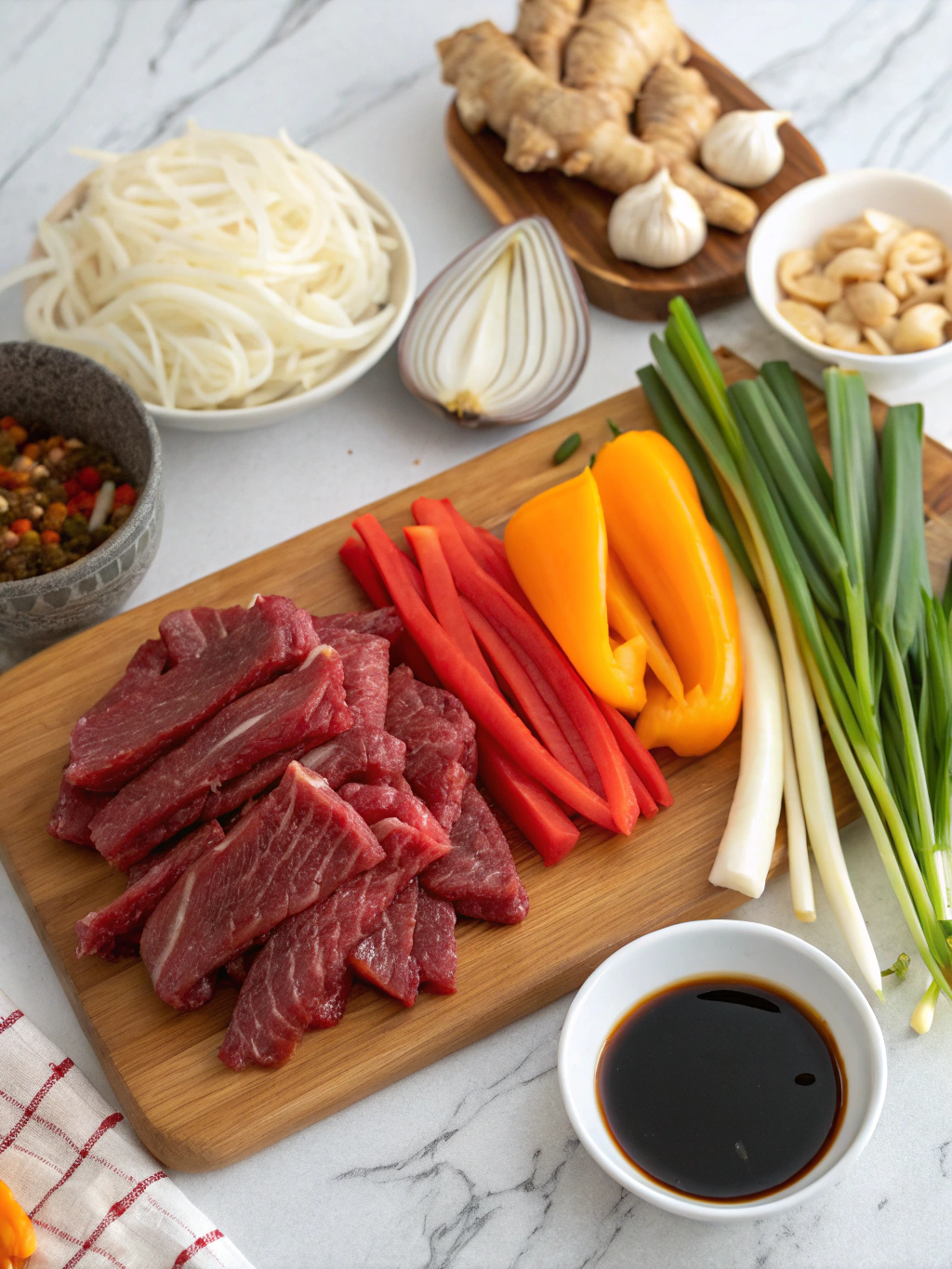
Gather these ingredients for an authentic Mongolian Beef Stir‑Fry experience. Each component plays a crucial role in building those complex flavors that make this dish so addictive:
For the Beef and Marinade:
- 1 pound flank steak, sliced against the grain into thin strips (substitute: sirloin or skirt steak)
- 2 tablespoons cornstarch
- 1 tablespoon vegetable oil
- 1 teaspoon baking soda (optional, for tenderizing)
For the Sauce:
- ½ cup low-sodium soy sauce (substitute: tamari for gluten-free option)
- ⅓ cup brown sugar, packed
- 3 tablespoons water
- 2 tablespoons hoisin sauce
- 1 tablespoon rice vinegar
- 2 teaspoons sesame oil
- ¼ teaspoon red pepper flakes (adjust to taste)
For the Stir-Fry:
- 3 tablespoons vegetable oil, divided
- 4-6 cloves garlic, minced
- 1 tablespoon fresh ginger, grated
- 6 green onions, white parts sliced for cooking, green parts reserved for garnish
- 1 red bell pepper, thinly sliced (optional)
- 1 cup snow peas or sugar snap peas (optional)
- 2 teaspoons toasted sesame seeds, for garnish
Timing
Preparation Time: 20 minutes (includes slicing beef and vegetables, mixing sauce)
Marinating Time: 15-30 minutes (can be shortened to 10 minutes if you’re in a hurry)
Cooking Time: 15 minutes
Total Time: 50-65 minutes, which is approximately 30% faster than traditional beef stir-fry recipes that require longer marinating times. This efficiency makes it perfect for weeknight dinners when time is precious.
Step-by-Step Instructions
Step 1: Prepare the Beef
Place your beef in the freezer for 15-20 minutes before slicing—this makes it easier to cut thin, uniform strips. Once chilled, slice the beef against the grain into ¼-inch strips. In a medium bowl, toss the beef strips with baking soda (if using), 1 tablespoon oil, and cornstarch until evenly coated. Let marinate for 15-30 minutes at room temperature.
Step 2: Prepare the Sauce
In a bowl, whisk together soy sauce, brown sugar, water, hoisin sauce, rice vinegar, sesame oil, and red pepper flakes until the sugar dissolves completely. The sauce should have a balanced sweet-savory profile with a hint of tanginess from the vinegar. Set aside to allow flavors to meld while you prepare other components.
Step 3: Prepare Vegetables
Mince garlic, grate ginger, and slice green onions, separating the white and green parts. If using bell pepper and snow peas, slice them into thin, even pieces for quick cooking. Having all vegetables prepped before heating your wok or pan is crucial for stir-fry success.
Step 4: Sear the Beef
Heat a wok or large skillet over high heat until smoking. Add 2 tablespoons vegetable oil and swirl to coat. Working in batches to avoid overcrowding (which causes steaming instead of searing), add beef strips in a single layer and cook undisturbed for 1 minute until browned on the bottom. Flip and cook for another 30 seconds. Transfer to a clean plate and repeat with remaining beef.
Step 5: Stir-Fry Aromatics and Vegetables
In the same wok, add remaining 1 tablespoon oil. Add garlic, ginger, and white parts of green onions, stir-frying for 30 seconds until fragrant. If using bell pepper and snow peas, add them now and stir-fry for 1-2 minutes until crisp-tender. Keep everything moving to prevent burning the aromatics.
Step 6: Combine and Finish
Return beef to the wok along with any accumulated juices. Pour in the prepared sauce and bring to a simmer. Cook for 2-3 minutes, stirring frequently, until the sauce thickens and coats the beef and vegetables with a glossy sheen. The cornstarch from the beef marinade will help thicken the sauce naturally.
Step 7: Garnish and Serve
Remove from heat and sprinkle with reserved green onion tops and toasted sesame seeds. Serve immediately over steamed rice or noodles to capture all the delicious sauce. For an authentic presentation, mound the Mongolian Beef Stir‑Fry slightly off-center on the plate with rice alongside.
Nutritional Information
This Mongolian Beef Stir‑Fry recipe yields approximately 4 servings. Each serving contains:
- Calories: 380 kcal
- Protein: 29g
- Carbohydrates: 24g
- Dietary Fiber: 2g
- Sugars: 18g
- Fat: 19g
- Saturated Fat: 5g
- Sodium: 890mg
- Potassium: 520mg
- Iron: 15% DV
- Vitamin C: 35% DV (higher if using bell pepper)
This dish provides a significant protein boost while delivering essential vitamins and minerals. The beef contributes to your daily iron requirements, while the vegetables add important antioxidants and fiber.
Healthier Alternatives for the Recipe
Transform this classic into a lighter version with these smart modifications:
- Reduce sugar to 3 tablespoons and replace brown sugar with coconut sugar or honey for a less refined sweetener option.
- Increase the vegetable-to-meat ratio by adding more bell peppers, snow peas, broccoli, or mushrooms for extra nutrients and fiber.
- Substitute half the beef with firm tofu or tempeh to reduce saturated fat while maintaining protein content.
- Use liquid aminos or coconut aminos instead of soy sauce to reduce sodium content by approximately 40%.
- Serve over cauliflower rice or zucchini noodles instead of white rice to lower the carbohydrate content and add extra vegetables.
- For a gluten-free version, ensure you use tamari instead of regular soy sauce and check that your hoisin sauce is gluten-free.
Serving Suggestions
Elevate your Mongolian beef experience with these complementary pairings:
- Classic: Serve over jasmine rice or noodles (lo mein, udon, or rice noodles) to soak up the delicious sauce.
- Fresh contrast: Add a side of quick-pickled cucumbers with rice vinegar and a touch of sugar for a refreshing counterpoint.
- Complete the meal: Pair with a light miso soup starter and steamed edamame for an authentic Asian dining experience.
- Family-style: Present alongside other Asian favorites like vegetable spring rolls, dumplings, or a simple cucumber salad for a feast.
- Beverage pairing: Serve with jasmine tea, a light lager beer, or a semi-dry Riesling that complements the sweet-savory profile.
Common Mistakes to Avoid
Sidestep these pitfalls for perfect Mongolian beef every time:
- Cutting beef with the grain – Always slice against the grain to ensure tender meat. Cutting with the grain results in chewy, tough beef strips.
- Overcrowding the pan – This causes the meat to steam rather than sear. Cook in batches for that desirable caramelization.
- Using cold beef straight from the refrigerator – Allow meat to come to room temperature for about 20 minutes for more even cooking.
- Cooking vegetables too long – They should retain some crispness. Overcooked vegetables become mushy and lose their vibrant color and nutrients.
- Not preparing all ingredients before heating the wok – Stir-frying moves quickly! Have everything measured, cut, and ready beside your cooking station.
- Neglecting sauce consistency – If your sauce is too thin, mix 1 teaspoon cornstarch with 1 tablespoon cold water and stir in gradually.
Storing Tips for the Recipe
Make the most of your Mongolian beef with these storage and preparation strategies:
- Refrigeration: Store leftovers in an airtight container for up to 3 days. The flavors often deepen overnight, making day-two Mongolian beef particularly delicious.
- Freezing: While possible, freezing may affect the texture of the vegetables. If planning to freeze, consider undercooking the vegetables slightly. Freeze for up to 2 months in freezer-safe containers.
- Reheating: Warm gently in a skillet over medium heat with a splash of water to revive the sauce. Microwave on 70% power with a damp paper towel covering to prevent drying out.
- Meal prep: Slice beef and vegetables up to 2 days ahead and store separately in the refrigerator. Mix sauce up to 3 days ahead and refrigerate in a jar.
- Serving leftover strategy: Transform leftovers into lettuce wraps, add to fried rice, or stuff into spring roll wrappers for a different meal experience.
Conclusion
This Mongolian Beef Stir-Fry brings the bold flavors of your favorite Chinese restaurant right to your kitchen, proving that authentic Asian cuisine doesn’t require professional training or specialty equipment. With its perfect balance of tender beef, vibrant vegetables, and that irresistible sweet-savory sauce, it’s bound to become a staple in your recipe collection.
The beauty of this dish lies in its versatility—adjust the spice level, swap proteins, or add your favorite vegetables to make it truly yours. Whether you’re cooking for a quick weeknight dinner or impressing guests at a dinner party, this recipe delivers consistent, delicious results.
Have you tried making this Mongolian Beef Stir-Fry? Share your experience in the comments below! Did you add any special ingredients or make any modifications? We’d love to hear how you made this recipe your own. Happy cooking!

